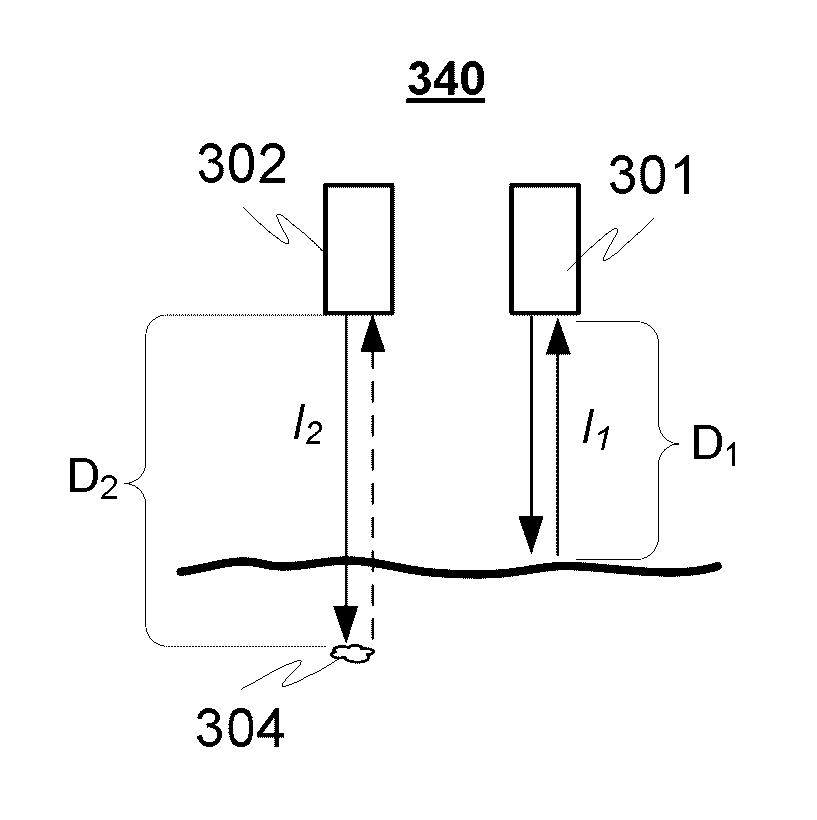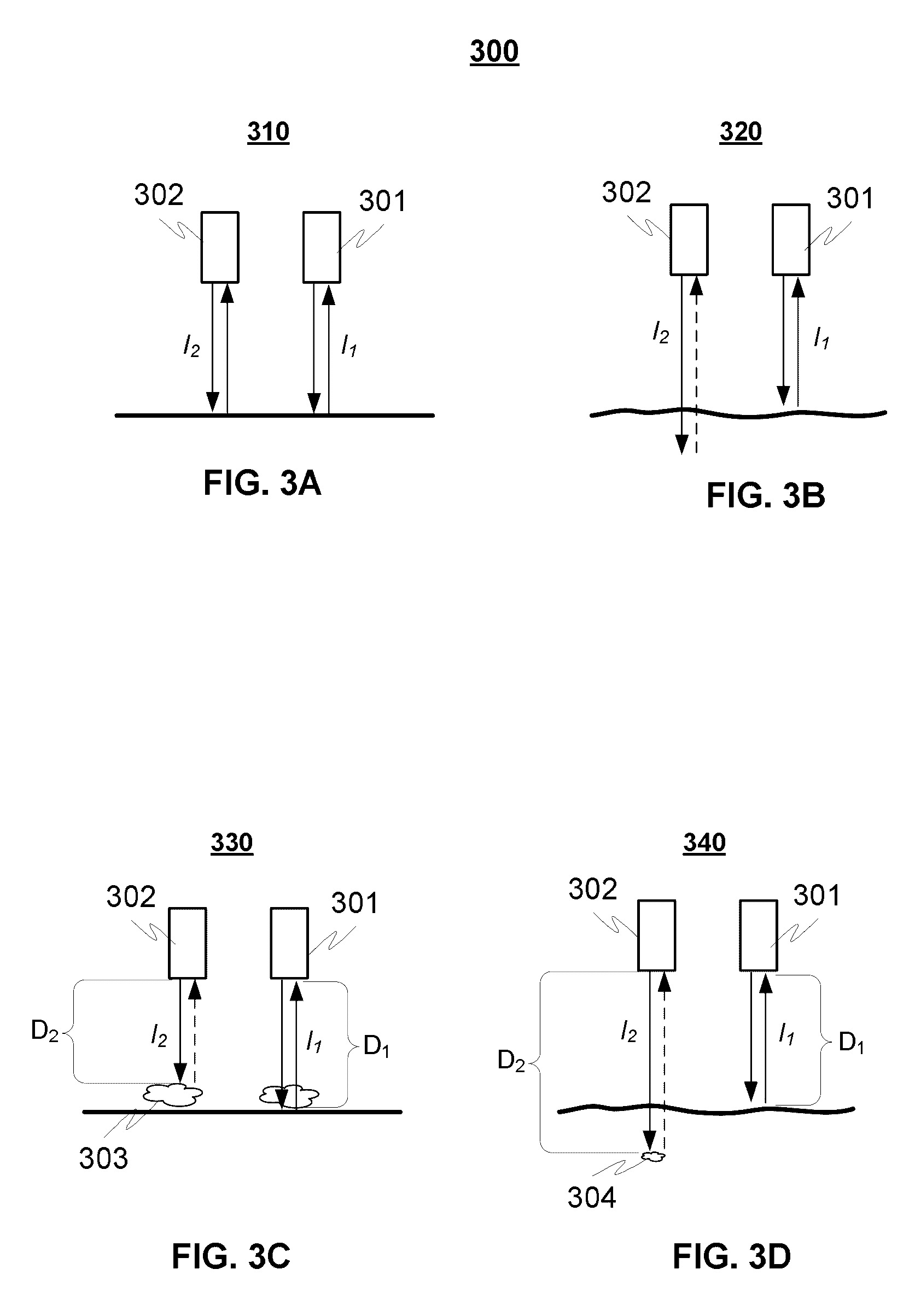Safety arrangement for aircraft and method for determining type of the landing surface for an aircraft
a safety arrangement and aircraft technology, applied in the field of amphibious aircraft, can solve the problems of damage to aircraft, crew and passengers, damage to aircraft, etc., and achieve the effects of improving the safety arrangement of the aircraft, improving reliability, and avoiding drawbacks
- Summary
- Abstract
- Description
- Claims
- Application Information
AI Technical Summary
Benefits of technology
Problems solved by technology
Method used
Image
Examples
Embodiment Construction
[0065]One example of one embodiment of the present invention is a safety arrangement for an amphibious aircraft, which safety arrangement is configured for detecting the type of a landing surface.
[0066]The safety arrangement comprises two transceivers, and the first transceiver is configured to operate or transmit on first electromagnetic wavelength and the second transceiver is configured to operate or transmit on second electromagnetic wavelength differing from said first wavelength.
[0067]The transceivers are configured to transmit essentially towards said landing surface (meaning essentially downwards or towards landing area) and at least one of them is configured to receive the reflections of said electromagnetic wavelengths.
[0068]The safety arrangement comprises determining means for determining the type of the landing surface based on the properties of reflections of said two electromagnetic wavelengths when reflected from said landing surface, and for outputting a signal indi...
PUM
 Login to View More
Login to View More Abstract
Description
Claims
Application Information
 Login to View More
Login to View More - R&D
- Intellectual Property
- Life Sciences
- Materials
- Tech Scout
- Unparalleled Data Quality
- Higher Quality Content
- 60% Fewer Hallucinations
Browse by: Latest US Patents, China's latest patents, Technical Efficacy Thesaurus, Application Domain, Technology Topic, Popular Technical Reports.
© 2025 PatSnap. All rights reserved.Legal|Privacy policy|Modern Slavery Act Transparency Statement|Sitemap|About US| Contact US: help@patsnap.com



